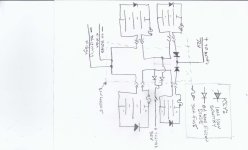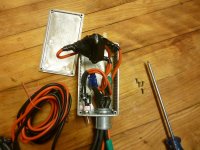llile said:
Well, 50 years later, I am that guy.
You, too? :lol:

I've stopped actually looking for bikes the last year or so, though I still take any that are offered, rare as that is, because my presently-completely-disorganized parts-bikes pile is almost half of my back room.

(not including the two motorcycles, which take up another 1/8 of it). (I had mroe stuff until the city decided I shouldn't, and had to clean it all up with a still-broken (fractured) ankle--most of it was moved inside, but some of it I couldnt' find room for).
Probably need to start throwing out old wheels, I really am getting too many of those around. But you never know - IT MIGHT COME IN HANDY SOME DAY!
I can never bring myself to do that, becuse everytime I start to, I discover another use for some part of the wheel.
Axles and nuts and washers make good bolts to hold stuff together, or spacers for things, etc.
Always needing more bearings to replace worn ones or ones I dropped and can't find again.
Hubs can often be adapted to other purposes, like jackshafts, or even spindles for steering linkages.
Rims...depending ont eh type could even be used as parts of a frame (decorative, at the least), when cut in pieces as needed. Could even make stout fenders out of them if you can bend them the other way round.

Steel ones can be welded together in various ways to make barriers or decorations, etc. Stack a bunch the same size and tack weld them into a cylinder to use for storing stuff in.
Also, remember that if you get "desparate" for the right lenght spoke, you can do what Karma did, and cut the elbow/flange end off, insert the spoke thru the hub flange, bend around and twist (like barb-wire fencing) around the straight lenght of spoke. install the threaded end into the nipple/rim just like normal, and lace up your wheel. Has worked for him for qutie a while, IIRC.




